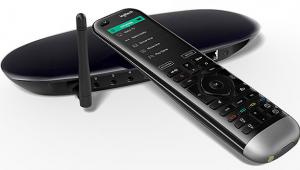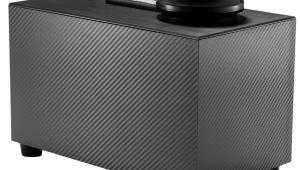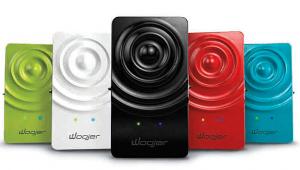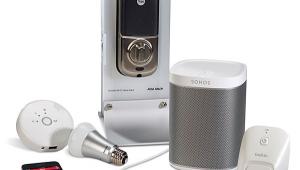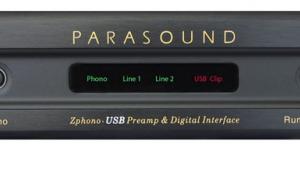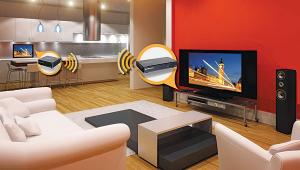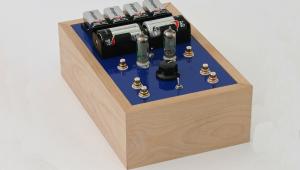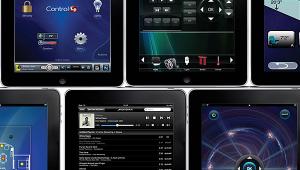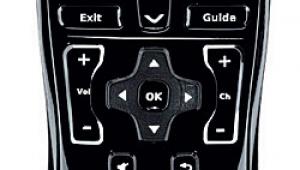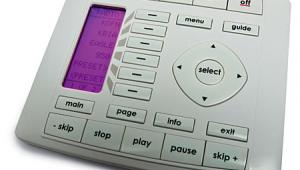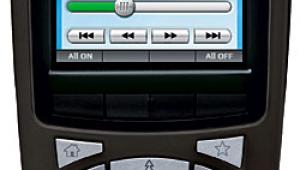Belkin PureAV RemoteTV
Simply put, Belkin's PureAV RemoteTV accepts the output of any NTSC video source, converts that analog audio/video signal to MPEG-2, and sends it wirelessly to a display device in another location, in better quality than is possible from similar devices. It essentially eliminates the need for a second source component—not just the hardware, but any related service, as well. Already have a single TV/DVD setup but want to enjoy programming in another room? Want to keep an eye on what someone else is watching or be sure to get your money's worth by displaying your pay-per-view movie on two different TVs? This is the way.
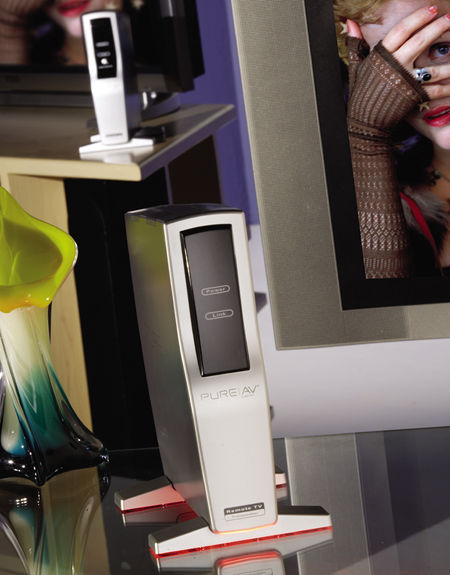
Wired for Wireless
The RemoteTV hardware comes in two units: a transmitter box and a similar-looking receiver. The two communicate via wall-penetrating radio-frequency (RF) signals using proprietary Air5 technology in the 5-gigahertz frequency band. There is absolutely no conflict with other wireless devices (even those in the same frequency band), no interruptions, and far-superior performance versus any 2.4-GHz product. The RemoteTV can typically accommodate transmission speeds of 15 megabits per second, which is good enough for video, and up to 40 Mbps, with a maximum range of 350 feet, under ideal conditions. No router or other Wi-Fi gear is needed.
The transmitter converts the analog composite, S-video, or component video input, along with analog stereo audio, to a digital signal, encodes it to MPEG-2, then streams it to the receiver. The receiver decodes it and converts it back to analog to connect to your TV input. The transmitter also has a full set of outputs, for passthrough to the TV in the source location. The transmitter unit must remain powered on for the passthrough to work, though. The RemoteTV was straightforward to connect, even without the manual. All of the ins and outs—everything from composite video to component video and stereo audio—are clearly marked. One possible wrinkle is that you need to use a button on the face of the receiver unit to set the receiver to accept whichever video format the transmitter is sending, but it is also simply labeled. The quality of the source component signal can step down on its way to the destination TV, if, for example, you are using your satellite tuner's S-video output and your destination TV's composite video input. However, the signal cannot be scaled up.
In addition, RemoteTV uses the original source device's remote control, relaying all commands from the receiver back to the transmitter connected to the source component. You won't need to do any programming, although you must use the supplied IR blaster. If you use a universal remote in proximity to the second TV (and not abscond with the original from the source location), that will work just the same. You can use multiple RemoteTV transmitter/
receiver pairs in the same house, as each receiver is uniquely matched to its own transmitter. Perhaps not coincidentally, Belkin also recently introduced a line of optional step-up audio and video cables of different grades for all formats, and they provide a big improvement over the thin, standard red/
white/yellow A/V cables that come with most components. Remember, too, that the cables are the only piece of add-on gear necessary to deliver content to a second TV, which is helpful if space is a consideration, say in the kitchen or a smaller bedroom, or if aesthetics are an issue.
A funny thing happened. . .
Despite the extra level of digital encoding/decoding that the streaming process introduces, a DirecTV satellite signal showed no evidence of additional compression artifacting. In fact, the image quality was so sharp and natural, it made me wonder how DVD would fare. After a little rewiring, I noted that bright DVD whites tended to bleed, and darker areas of the frame revealed more digital-compression flickering than I was expecting. Movies were still eminently watchable, though.
And then an evil curiosity sunk in: How would the RemoteTV handle an attempt to record the streamed DVD signal via the difficult-to-regulate "analog hole" that Motion Picture Association of America president Jack Valenti claims to be so concerned about? Lo and behold, I was able to record DVD-R dupes of a couple of copy-protected discs, although two thin lines of dashes appeared along the top edge of the screen, and there was some not-too-distracting flicker along the bottom. But it still beats VHS! I should point out that this is just an unexpected, unadvertised consequence of the RemoteTV's operation, most certainly not an intended feature to defeat any copy-protection device.
Video gaming is another fun application, provided you use a wireless IR controller and affix the IR blaster to the game console's receiver module that plugs into a port on the front of the console. The miniscule lag time that this additional layer of gear introduces will only concern the hardest-core fragger. It's a small price to pay for gaming from bed when you're too sick (or lazy) to make it to the living room, or if you want to go head-to-head with the guy in the next apartment. If you have all of your audio/video sources running into a single A/V receiver, then the Belkin's one set of outputs plus a properly configured universal remote can indeed deliver all of your home theater fare to a secondary location, without running wires, in case I haven't made that point clearly enough.
If you like the notion of painlessly, virtually bringing the gear—and content—that you've already paid for to another room, the Belkin RemoteTV embodies that often-elusive combination of convenience and quality, and possibly even savings.
Highlights
• Encodes, sends, receives, and decodes a high-quality, high-bandwidth signal
• Versatile connectivity for almost any source/TV, with easy setup

